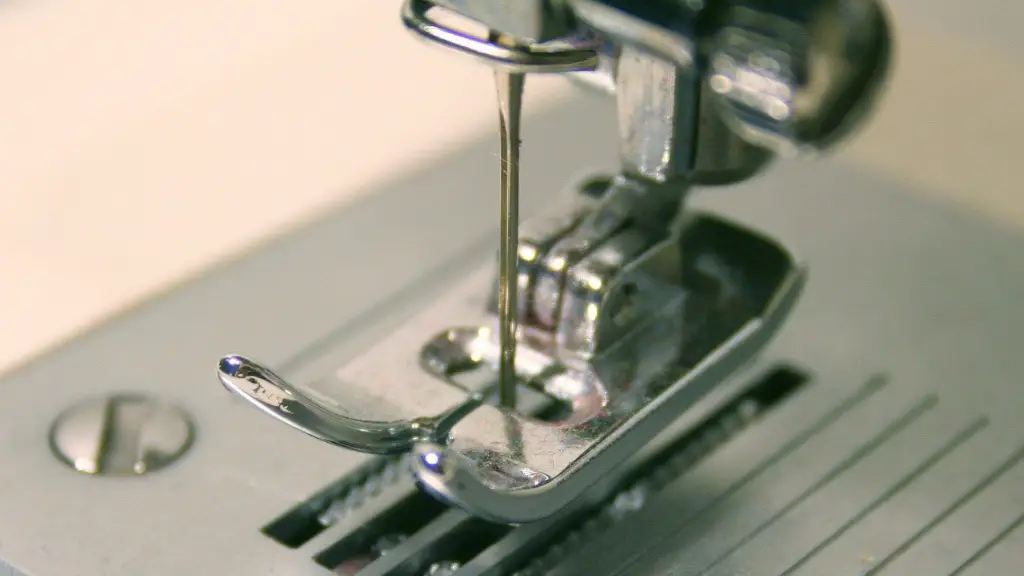1. Introduction
The invention of the sewing machine in the mid-nineteenth century changed the way people made their clothes and revolutionized the apparel industry. It allowed for the mass production of garments, contributed to the rise of the working class, and generally had a huge impact on society – one that is still felt today. In this article, we will discuss the history of the sewing machine and its effects on the fashion industry and our everyday lives.
2. Impact on the Fashion Industry
Before the invention of the sewing machine, it was almost impossible for a single person to create a garment quickly and with a high level of quality. Constructing a garment was a time-consuming and labor-intensive task that required long hours, patience, and excellent craftsmanship. With the invention of the sewing machine, it became possible for one person to make a garment in a fraction of the time with much less effort.
The introduction of the sewing machine allowed for the mass production of garments at a fraction of the price. This enabled apparel companies to produce garments more quickly, efficiently, and at a lower cost. It also allowed designers to experiment with new fabrics, styles, and silhouettes that could be easily and quickly produced in large quantities. This revolutionized the fashion industry and led to a new wave of creativity and innovation.
3. Impact on Everyday Lives
The invention of the sewing machine had a profound impact on everyday life. It opened the door for more people to have access to clothing that was affordable and of good quality. This allowed for the development of a working class and the formation of labor unions. It also gave rise to a stronger home-based economy and allowed for improvements in people’s day-to-day lives.
Garments made with the help of a sewing machine were also much more durable and better-fitting than those made by hand. This meant that people could have longer-lasting, better-fitting garments that were more comfortable and stylish.
4. Impact on the Job Market
The introduction of the sewing machine had a huge impact on the job market. With the ability to mass-produce garments, businesses no longer needed the same number of seamstresses to make the same number of garments. This led to a drastic reduction in the number of available sewing-related jobs, while also creating a new market for skilled operators and leatherworkers.
The sewing machine also enabled businesses to outsource their production, leading to the creation of many small businesses and home-based sewing shops. This allowed people to make a living without having to devote large amounts of time to sewing garments.
5. Impact on Education
The invention of the sewing machine also helped break down educational and economic barriers. Before the introduction of the sewing machine, it was difficult for people from lower socioeconomic backgrounds to learn the skill of sewing. The sewing machine allowed for the swift and efficient production of garments, which meant that anyone could learn the craft. This led to a society where anyone could learn the skill of sewing from a relatively low starting point and be successful.
6. Impact on the Clothing Trade
The invention of the sewing machine also had a huge impact on the clothing trade. Prior to its introduction, the exchange of clothing was largely done through bartering and trading. The introduction of the machine allowed for the mass production of garments, which meant they could be bought and sold more easily. This led to the expansion of the clothing trade, bringing new opportunities to seamstresses and businesses alike.
7. Impact on Global Trade
The invention of the sewing machine also had a major impact on global trade. Its introduction allowed for the mass production of garments, which meant that businesses could now easily ship them around the world. This opened the door for international trade and spurred the globalization of the fashion industry.
8. The Ubiquity of the Sewing Machine
Today, the sewing machine is ubiquitous, with a machine in almost every household. This has led to a new culture of DIY fashion, where people hand-sew their own clothes or customize store-bought garments. The rise of this culture is credited to the invention of the sewing machine and its impact on society.
9. Impact on Future Innovation
The advent of the sewing machine has shaped the future of fashion innovation. With the ability to mass-produce garments more quickly and efficiently, it has enabled designers to push the boundaries of fashion and develop new silhouettes and styles. Today, the sewing machine is seen as an indispensable part of the fashion industry, allowing for faster and more efficient production.
10. Technology Advances
The technology advances related to the sewing machine have been vast. From the introduction of computerized machines to the development of machines that can sew multiple garments at once, the technology has come a long way in the past century. This has allowed the apparel industry to expand even further, creating new possibilities for innovation and growth.
Conclusion
The sewing machine has had a profound impact on society. It has revolutionized the fashion industry, enabled the development of a working class, and opened the door for global trade. It has also enabled a new culture of DIY fashion that has allowed people to express themselves through their clothing. The effects of the sewing machine are still felt today, and it will continue to shape the future of fashion and innovation.


